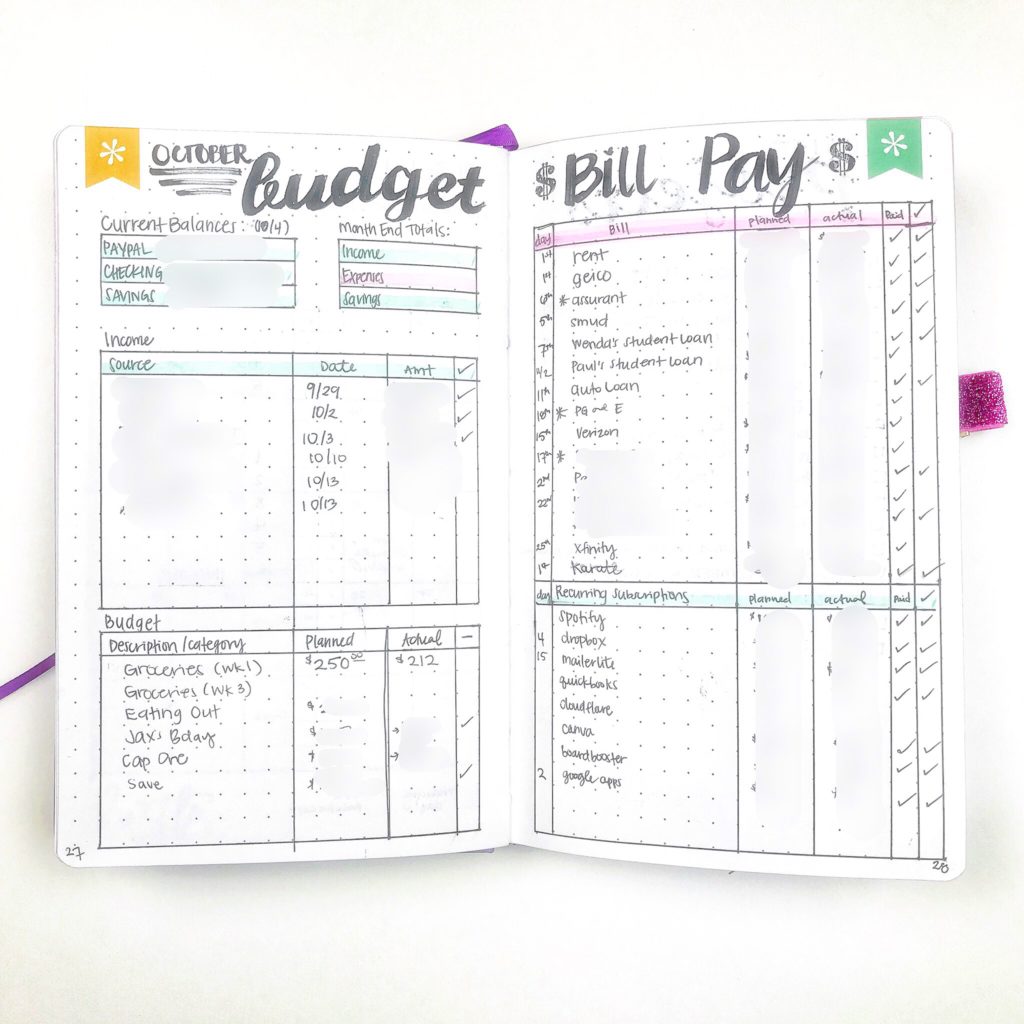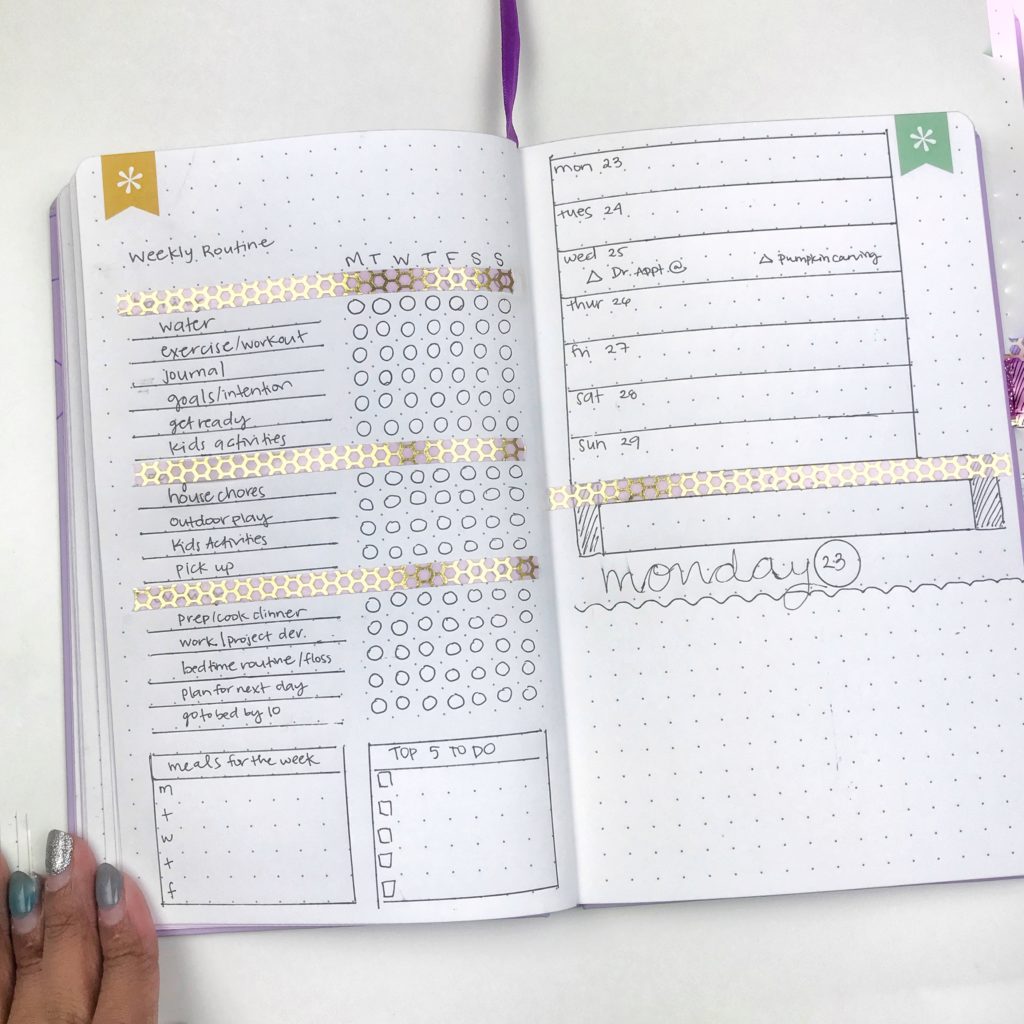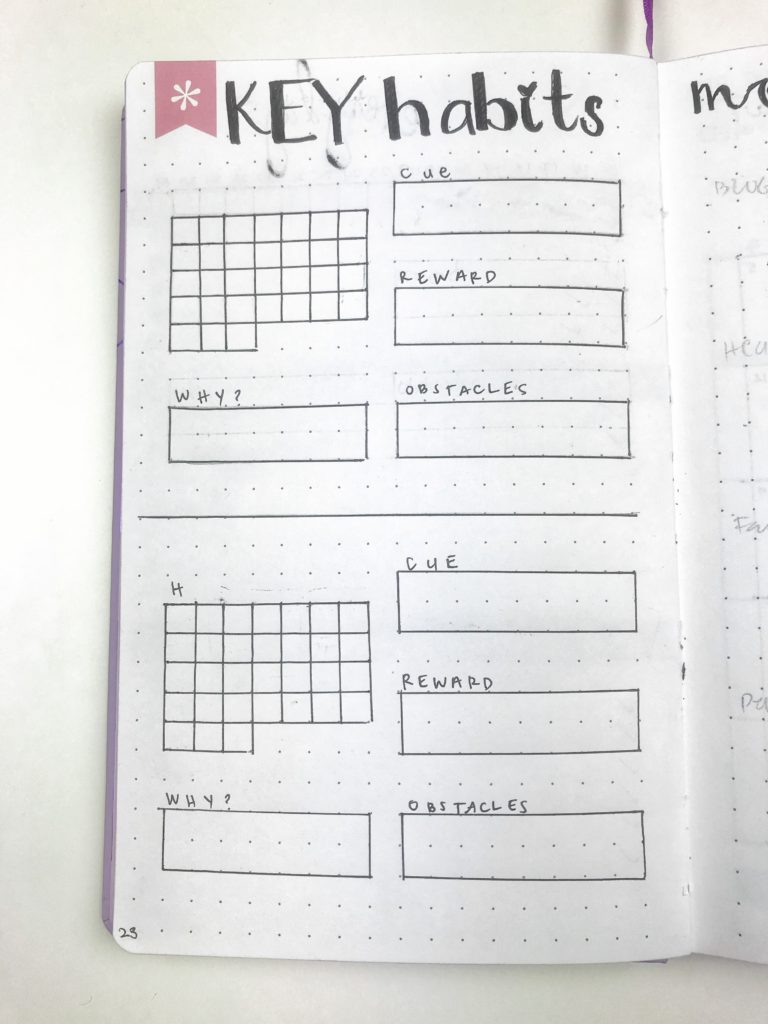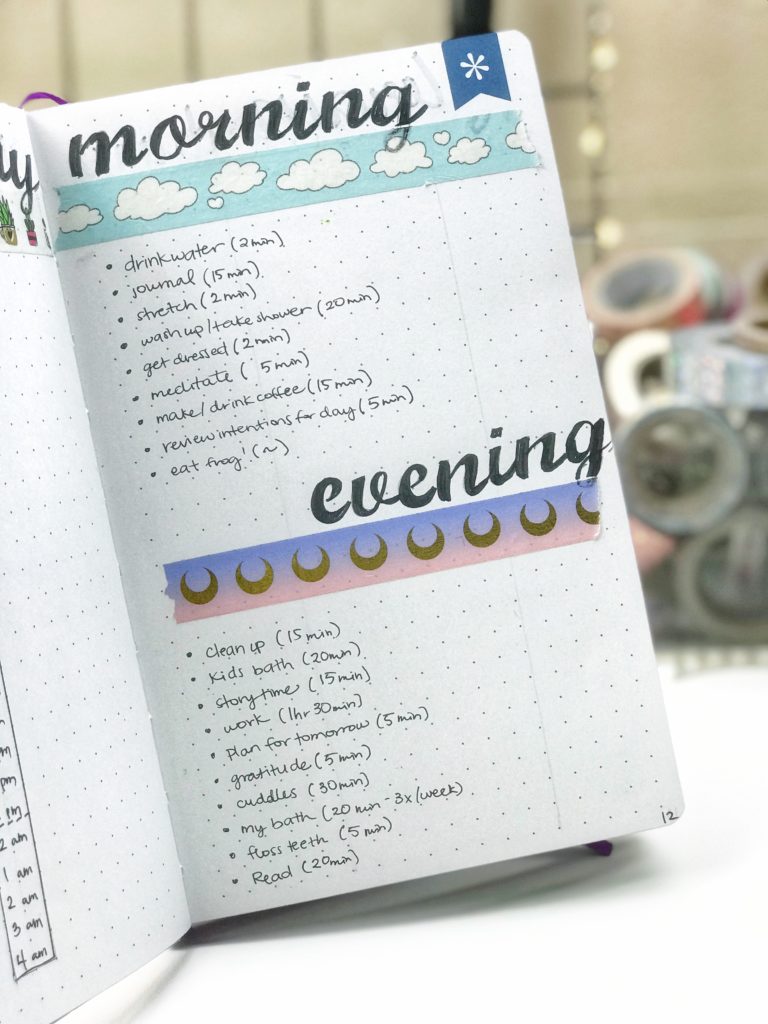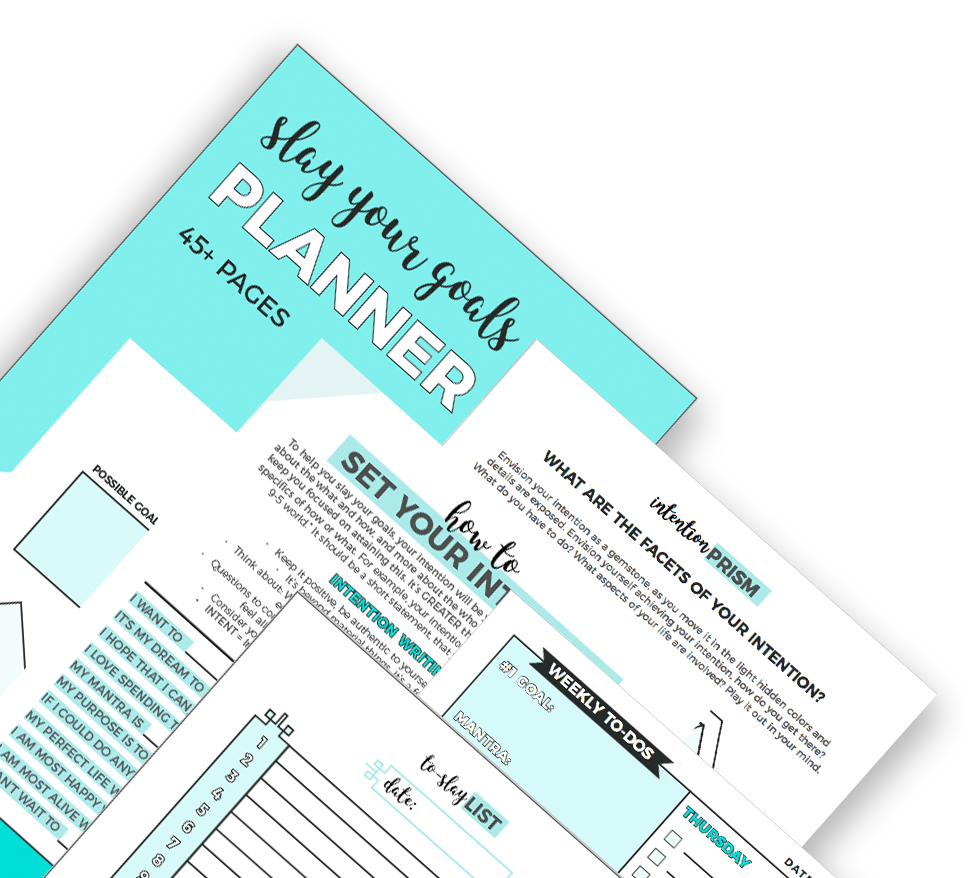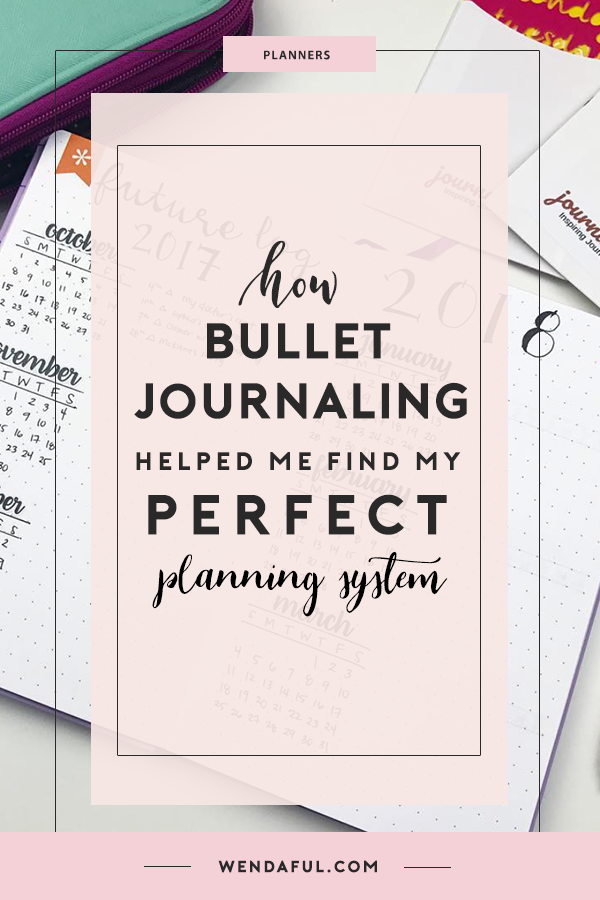So I have finally got on the bullet journaling bandwagon! I’m pretty sure you’ve heard of bullet journaling. Bullet Journaling has been a hot trend for a while in the planner community online. The traditional bullet journal system was first introduced by Ryder Carroll from BulletJournal.com. If you haven’t heard of it, it is basically a way to combine all of your plans, goals, thoughts, ideas, finances, schedules, lists and more into one single journal. It’s a way to organize everything going on in your life in one simple notebook. ! In this post, I will share with you how to get started with a bullet journal as well as the benefits of it.
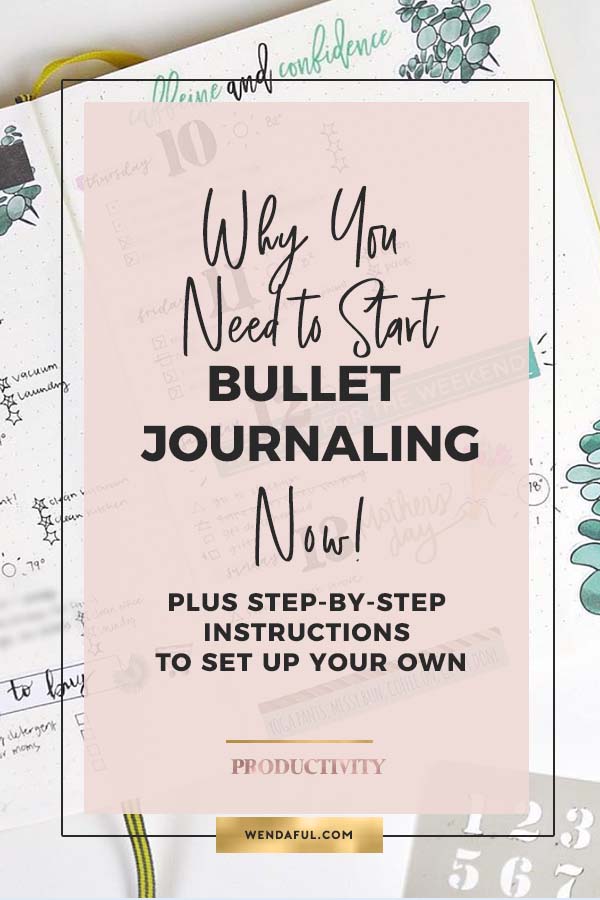 Why it took me so long to start a bullet journal
Why it took me so long to start a bullet journal
-
Not enough time to create layouts every week
- I never started bullet journaling because I was always so scared of how much time and work it would take to create layouts. (I actually can draw out my layouts pretty quickly and don’t worry too much about the way it looks.
-
Not artistic enough
- I thought I wasn’t artsy enough to make such pretty layouts. (but there are stencils, stickers, washi and more to help us those less artistic out!)
-
No separated sections
- I am a person of structure and I love having a planner that’s already set up for me. I also didn’t like that there weren’t any sections separating the different parts of the planner like the collections from the daily planning. (That’s why there’s an index! – more about that later)
-
I’m a perfectionist
- The thought of ripping out pages of my bullet journal, whenever I made a mistake was not something I liked. I love ring bound planners and inserts because if I rip out a page I can simply reprint it and reinsert it in. (Mistakes are bound to happen, I ripped out some pages and definitely didn’t like it, so I’ve learned to just embrace it and use white out instead!)
-
No other pretty planners
- I love my Untimely Planner, the Erin Condren planners, the PurpleTrail planner, the Bloom Daily Planners, the Filofaxes, & all the other planners out there!
- Starting a bullet journal would mean I would stop using all these pretty planners! They are all so great, and starting a bullet journal meant I wouldn’t be able to use any of them anymore!
- This is where it gets hard, do I plan for functionality or plan for a hobby? Ultimately, being functional and productive is the right answer for me.
- Most store-bought planners tend to have some limitations with them. They aren’t very customizable, so you are forced to use whatever calendar layouts and note pages are provided to you. This limits you to how much you can include on each page and what sections there are.
- With a bullet journal, it replaces your planner and includes absolutely anything and everything that you find important.
How Bullet Journaling Benefited Me
When Erin Condren came out with a dot grid notebook, I bought one and figured I’d give bullet journaling a chance. Instantly, I fell in love! If you follow me, then you have seen how many planner layouts I’ve gone through. From horizontal to vertical, to hourly, I am constantly changing my planning pages.
I am always trying to find a layout that fits my current season of life. I make a ton of printables because everyone has different lives, everyone plans differently, but also because different times of our lives require different ways to plan our days. The thing with typical planners, though, is that when your layouts change, your whole planner has to change. You have to go through the whole process of setting up a new planner and that can take hours, especially if you print out your own inserts like myself.
Related Posts: Free Printable Planners
Ways that I have benefited from bullet journaling include:
-
Completely customizable
- Because it is such a simple system, it is easy to customize it for your needs. I’ll list some ways I’ve customized mine below, but there are so many ideas on Instagram, Pinterest, and YouTube! You have the freedom to change your planning layouts whenever you like. You are basically designing your own planner without the need to learn how to use Adobe InDesign! Every day, week, month is a fresh new start, a blank slate, a new way to plan according to the priorities going on in your life!
-
Less overwhelmed
- By far the biggest benefit to using a bullet journal is that it has helped me feel less overwhelmed. If you have too many things on your mind then you need this system. We all have a lot of different daily tasks, appointments, and various things we need to remember. Trying to keep track of everything in your head becomes exhausting. Since bullet journaling, it has freed up a lot of space in my mind. You’ll be surprised how much of a difference this will make in your life. Writing down all these thoughts and ideas in our heads allows us to use those brain cells for more creative and productive endeavors. You may even find that you sleep better because you’re no longer worried about forgetting an important task or appointment the next day.
-
Less confusion
- With just one notebook, you don’t miss important tasks or events. Nothing falls through the cracks because you aren’t losing tiny pieces of notepaper or sticky notes. There’s no need to remember which planner you wrote that important note in because you only have one!
-
Goals are always in view
- Since I’ve started bullet journaling I have been able to see my goals throughout my planner. I love having a journal that includes my habits and routine tracking to keep me on track of my goals. As well as a spot for me to journal and review my thoughts, feelings, and measure my progress. I have been using my bullet journal to help me plan better, set better goals, and reach my dreams faster.
Related Post: How To Set Proper Goals To Achieve Your Dreams
How Do I Get Started with a Bullet Journal?
Before I even started writing in my bullet journal I laid out a plan of what I wanted to include in my journal. I used scratch paper and wrote everything I wanted to keep track of. It was like my brain exploded onto paper! I thought to myself, no way will all this fit into this little notebook! I read many posts about how to get started with a bullet journal. Then I started writing out the order of what I wanted in my notebook and which layouts I would try out.
Supplies Needed:
- Notebook
- Pen
Yup that’s about it. Your notebook can be any kind, especially if you want to try it out. You can splurge for a better notebook after you decide if bullet journaling will work for you. & use your favorite pen. Other notebooks which you can use include a hardbound notebook, coiled notebook or even a traveler’s notebook. I’ve dabbled a bit with bullet journaling, at least the signifiers part of it.
Related Post: MY MIDORI TRAVELER’S NOTEBOOK PLANNING SYSTEM + TONS OF FREE PRINTABLES
As much as I love the Erin Condren dot grid notebook especially because of the size and the quality of the paper and nice suede touch of it, it is just too small for me to include everything in. At best, it will only last me about three months. There are only 62 pages. I am definitely going to try out the Leuttchurm 1
Optional supplies
- Highlighters
- Brush Pens/Markers
- Page Flags
- Stencils
- Washi Tape
- Stickers
You definitely do NOT need these items to start a bullet journal, but they definitely make it more fun and easier!
[amazon_link asins=’B01M9A8OBZ,B075L86Q3L,B00JVB8FBA,B01M71S9DU,B00FWRIAUS,B013LAPANM,B00E1IBPGU’ template=’ProductGrid’ store=’wwc045-20′ marketplace=’US’ link_id=’e5cf5538-5ae9-11e8-8c99-377d6f937dd9′]
The Setup
Your bullet journal can be laid out however you like, but if you’re like me and need some direction, then it definitely helps to know a thing or two before diving in. If you want to learn more about the right way to bullet journal then go check out the original bullet journal site here.
The bullet journal consists of mainly 3 different parts: The Key & Index, the Calendar, & the Collections or Lists
Part 1: The Index & Key
The first pages of your journal will help you keep track of what’s in your journal and how to use it.
- Index
- Every bullet journal should have an index. The Index is like the table of contents of your journal. This lets you know what area different sections of the journal are located, such as grocery and meal planning, or finances. It is a great way to jot down notes quickly as you can go right to that page.
- Every time you title a page simply note the page number and write it down in your index.
- I love this because I can add notes wherever and still be able to quickly find them!
- I also use threading, you can read more about that here: http://bulletjournal.com/threading/
- Page numbers
- Since you have an index, you also need to have page numbers. Some notebooks like the Leuttchurm comes with an index and numbered pages already. To use it efficiently, make sure every page is numbered and it corresponds with what is in the index.
- Signifiers or Key
- The key is for signifiers, which are symbols that you assign to different types of notes. The basics include ones for tasks, appointments, notes. And also how you want to annotate when they are completed or migrated. It can be helpful when you want to categorize your to-do list and prioritize them as well. An exclamation mark or star is great for high priority items, maybe a heart for things related to your significant other, or a light bulb for ideas.
Part 2: The Calendar
Future Log, Monthly Log & Daily Log.
-
The Future Log
- With the original bullet journal setup, this is a two-page spread that records the coming 6 months. Many bullet journalers find it helpful to use a more traditional yearly calendar instead. This is a great place to record birthdays, anniversaries, future appointments or block out vacation time.
-
Monthly Logs
- At the start of each month, there should be a monthly log. You can list out the dates and days down and use one line for each day of the month. Here you’ll record appointments and due dates. The monthly log will come in handy for those times when you have a dentist appointment or a birthday party. Again you can customize this to your liking. A lot of people draw out a traditional monthly boxed calendar, personally, I like the log layout because it’s easy and the list format just appeals to me.
-
Weekly Logs
- Now, this isn’t a part of the original system but a lot of us planner addicts like to add it to our bullet journal anyways. There are 101+ ways to design your weekly layout. You can again, find inspiration from Instagram or Pinterest, I like to use the hashtag #bujoweekly
-
Daily Logs
- The daily log is where you’ll spend most of your time in the journal. Start a new section each day and record anything important for the day. Make your list using the key signifiers for your tasks and cross them off as you get them finished. Make notes of anything important you need to remember throughout the day. Everything gets logged in the daily log for speed and ease. From there you can move it as needed to the monthly or future log, or migrate it to a different day.
-
Migrating Tasks
- At the end of your day, take time to review your tasks and cross out and migrate anything that didn’t get finished. For example, if you didn’t get around to doing laundry today, draw an arrow through it and add the task to the next day’s daily task list. If you noted an appointment that came up yesterday, move it to your monthly list and draw an arrow through it in yesterday’s list. If something is no longer relevant, then cross it out completely. Your goal is to deal with each entry from your daily list by completing it, migrating it, or crossing it out.
Part 3: Collections or Lists
This section is for themed things you would like to keep track of that isn’t date related.
Some examples of this may be:
- List of movies or tv shows you want to watch or watched
- Books you’d like to read
- Places you want to travel to
- Self Care Ideas
- Cleaning Checklists
- Blog Posts Tracker
- YouTube Tracker
- Projects Lists & Trackers
- & More!
You can start this list on your next blank page in your journal, title it then make a note of which page it’s on and add this list or collection to your index page. Every time you want to add to the list, you can check your index to see which page it’s on, and continue!
Favorite Spreads & Layouts
After learning the basics, I turned to Instagram and Pinterest to find amazing creative bullet journal layouts and spreads for every type of planner I wanted. Here are a few of my favorites:
Customizing Your Bullet Journal to Your Needs
After setting up the basics of my bullet journal, I wanted to customize it to my needs. The great thing about bullet journaling is that you can add so much to it and not have to worry about the order of it since there’s an index! If you think of more things to add to it, just make note of the page number and add it to your index to remember where it was.
My main goal of my planner is to organize my work and home life. Being a blogger who works from home and who is also a stay at home mom, I needed specific ways to plan. I have to set my own goals since I don’t have a typical 9-5 job or a boss telling me what I need to get done and by when. I wanted to make sure my blog was moving forward, but also my home and personal life were still in good shape. I needed layouts in my bullet journal to refer to whenever I felt lost or unfocused. So I included these custom layouts in my journal:
-
Habit Tracker:
- That means feeding the family healthy meals, sleeping at an appropriate time, maintaining our hygiene, keeping the house clean and tidy, and finding time to enjoy life and all the other little things. So to stay on top of the things I needed to have a daily a routine tracker of daily habits.
-
Time Tracker:
- Perhaps my favorite spread ever! The idea originally came from @logthatlife. It’s perfect for being aware of how much time you spend on a certain task and helps you to become more productive.
-
Routines:
- It’s important to have a routine, especially a morning and night routine. To be sure that I stick to my routines I write it out in my journal. So when I wake up I don’t have to think about it, I just follow what I wrote and do it. It makes waking up easier and makes my days much smoother.
-
Project Task List:
- I use this section to break down my projects. Every month I create a new list if I completed the last one. So instead of writing a task like “write blog post on bullet journaling” I make a task of all the little steps involved.
-
Goals Overview:
- Like I’ve mentioned before, I have sections throughout my journal that reflects my main goals. I used a goal planner from Nadalie Bardo which really helped me figure out what my goals were and how to break it down. You can find that here: Slay Your Goals Planner.
-
Weekly/Monthly Reviews:
- I really don’t know how I lived without conducting weekly and monthly reviews. I think this step is so crucial in planning! How can you measure your progress if you don’t know where you were last month or even last week!
-
Brain Dump:
- By far the biggest benefit to using a bullet journal is that it frees up a lot of brain space. You’ll be pleasantly surprised how much of a difference this will make. Most of us don’t realize how many appointments, tasks, and random pieces of information we keep track of. Writing them down allows you to use those brain cells for more creative and productive endeavors. You may even find that you sleep better because you’re no longer worried about forgetting an important task or appointment the next day.
-
Master List:
- I use this section to organize my brain dump. It includes everything I want to do that doesn’t have a specific date assigned. I can also prioritize it according to importance and urgency.
-
Konmari Checklist:
- I am a wannabe minimalist. I love decluttering and minimizing. I like the thought of having a crisp clean home but even after decluttering several times, I still can’t quite get where I want to be. I have a konmari checklist which I can keep track of which categories I’ve decluttered. I love how thorough my list is.
Related Post: 5 Easy Ways to Start Decluttering Now
- I am a wannabe minimalist. I love decluttering and minimizing. I like the thought of having a crisp clean home but even after decluttering several times, I still can’t quite get where I want to be. I have a konmari checklist which I can keep track of which categories I’ve decluttered. I love how thorough my list is.
-
Stats Tracker:
- I always think that I am not growing or my blog isn’t as good, but when I sit down and figure out all the numbers I see that I actually did progress! I love having a stats tracker to let me see how much I’m growing and what I can do to keep it up or what needs to change.
-
Daily Gratitude and Journal Entries:
- I like to incorporate my daily gratitude and journal entries about my days in my daily log. After the day is done I like to sit down and write down quickly what happened and what I was grateful for. I write this underneath all my tasks for that day. It has helped me to become much more present and happier.
For a list of many more ideas for your bullet journal, be sure to check out these posts from Christina’s Blog here! I’ve been reading her blog and I love how informative she is!
Here are some pictures of the spreads I did in my bullet journal to customize it:
Can this be My Perfect Planning System?
I Know How to Plan Better
I love using the bullet journal. It definitely is too early for me to tell though; it’s only been one month since I’ve started. But since bullet journaling, I’ve realized what I needed and wanted in a planner. It has helped me to recognize my daily habits, as well as to not forgot any important appointments. Since I am practically designing my own planner within my bullet journal it has helped me to think of new ideas and what I want to focus on more.
I’m More Organized
I have definitely become much more organized since bullet journaling. Not only in one part of my life but in both my personal and work aspects. Not only do I remember to bring the kids to their doctors’ appointments, but I also remember to cook dinner too! The bullet journal has definitely helped with these tasks and much more.
I Set Better Goals
Bullet journaling has helped me to get a better idea of what my goals are and what is required to reach those goals. Since I included lists, aspirations, and bucket lists, this gave me a good idea of what I want out of my life and what tasks are needed to do in order to achieve them.
I Learned So Much More About Myself
By reviewing my weeks and months I have been able to measure my progress, learn what makes me happier and able to focus more on the things that matter.
I Can Track My Habits To Stay On Track With My Goals
Since I am writing down just about everything in my bullet journal, I am starting to see my habits better. For example, in my budget section, I can see how much we’re spending on restaurants and fast food, and make an effort to stop. Just by tracking it in my bullet journal and becoming aware, I can fix the bad habits and work better to improve it. You can also track other things like food and exercise, your moods and resulting anxiety or stress, or track your daily expenses to see where you might be able to cut back.
So that’s my bullet journaling experience so far. Now I know why it’s so popular! I am so glad I tried it out because without it I wouldn’t have found my perfect planning system. Will I stick with it? I don’t know, I still love my other planners, but I do know what I like to plan for and how to plan for ultimate productivity. Maybe I’m planning to design planner inserts that include all this? Who knows? Wouldn’t that be awesome to have this system in a Filofax? Especially since I can’t keep my hands off my brand new Filofax Osterley Wine.
I love being able to review and journal on a regular basis, and I think that has been the most beneficial thing I’ve learned since bullet journaling. Another lesson I learned from bullet journaling is the importance of having everything together. I have been a multiple planner user for a while, but being able to do everything in one notebook was freeing. I felt more organized and much more productive.
I absolutely believe that setting goals are the first and most important step in planning your days and becoming more productive. Before setting goals I was just going through life day by day very slowly. But now I have a purpose, everything I do is with intentions and I have this awesome planner from Nadalie Bardo to thank for that! Her blog taught me so much about goal setting and slaying them! Her planner set me up for success. You can learn more about this planner and get yours here.
Onto you…
So do you bullet journal? If you don’t will you give it a shot? I think the most important things to remember when starting a bullet journal is to keep it simple. When things are simple, it helps you to think more clearly and focus on and see only the things that matter.
I hope you enjoyed this post, I know it was extremely long, but I felt it was needed to share with you everything I knew about bullet journaling.
[amazon_link asins=’B07581CXYK,B009ZMGRPQ,B0752WWCTN,B0044S5CZM,B07CNZS62V,B013LAPANM,B00E391XXM,B078TV28Z4,B01L9XEEFI’ template=’ProductGrid’ store=’wwc045-20′ marketplace=’US’ link_id=’32b8db9c-5aeb-11e8-9d22-718b7940a16a’]

